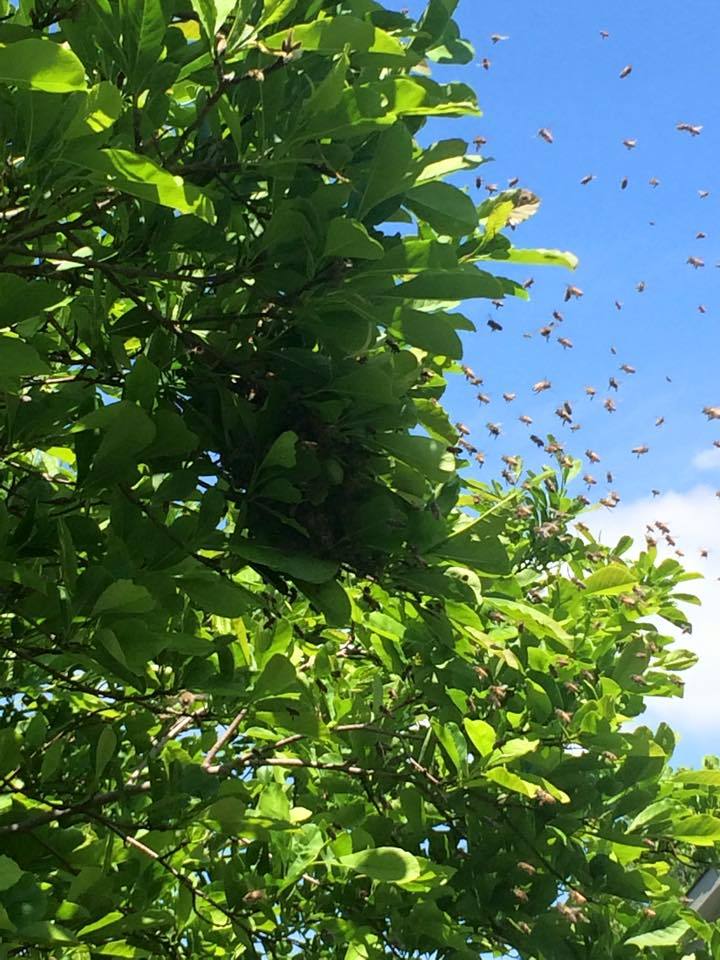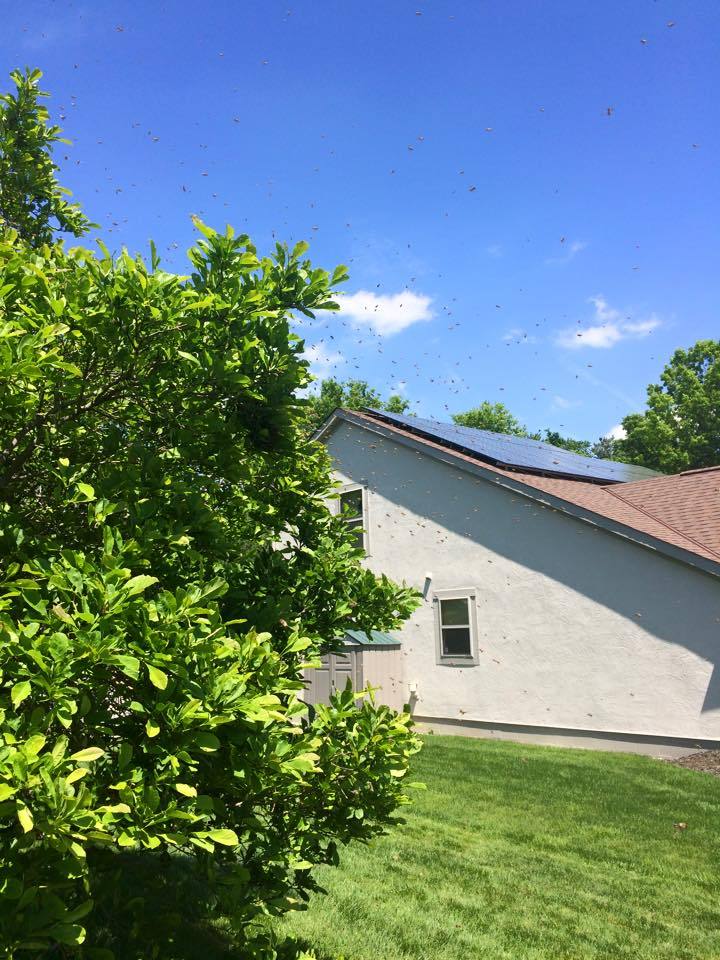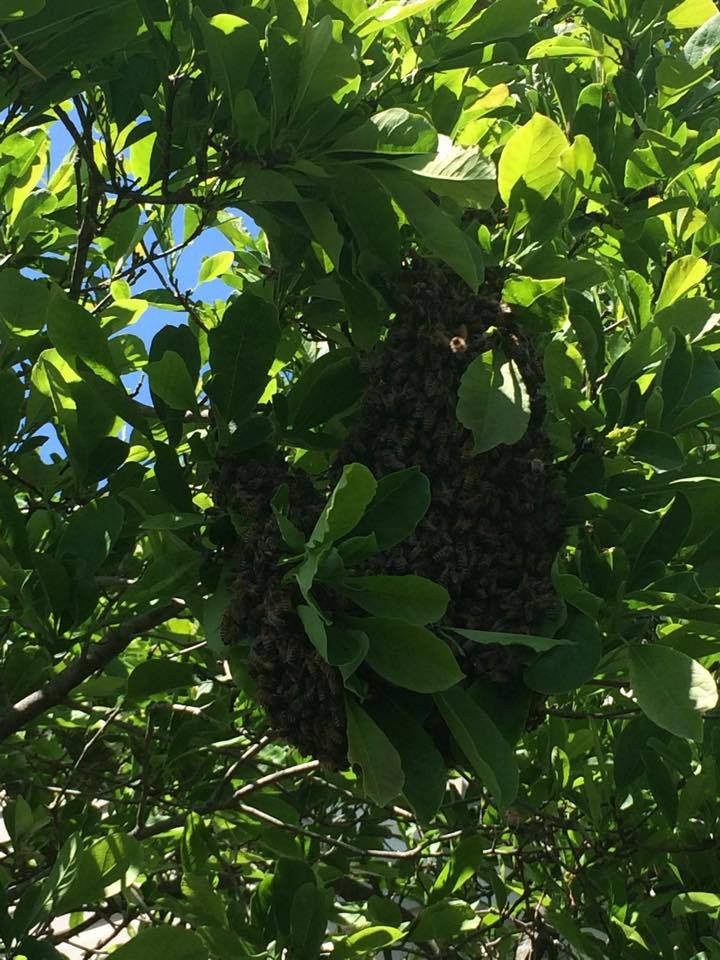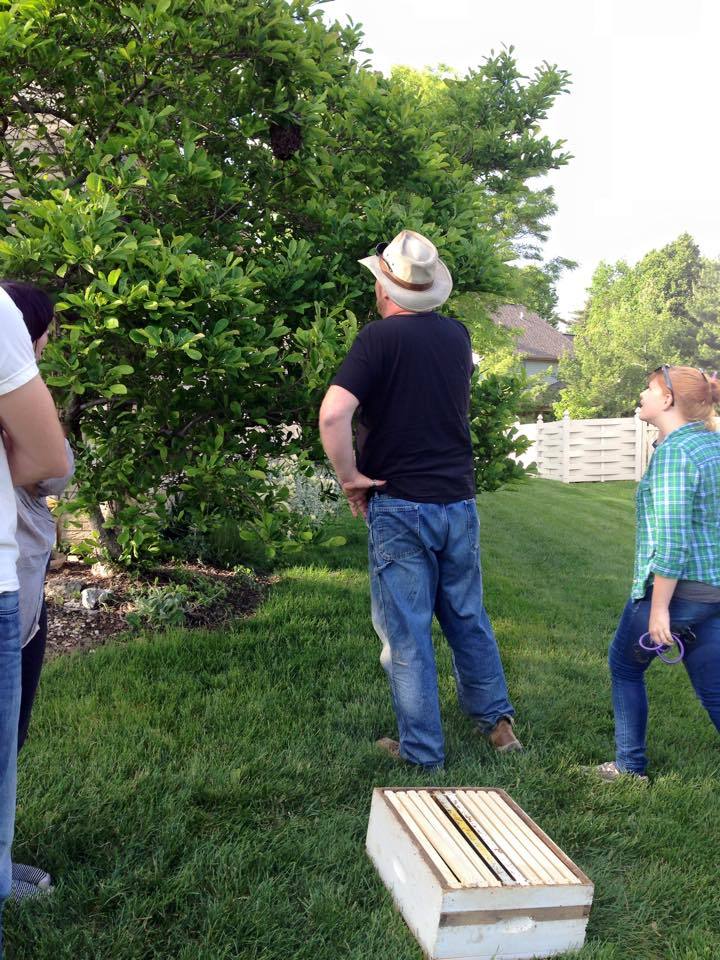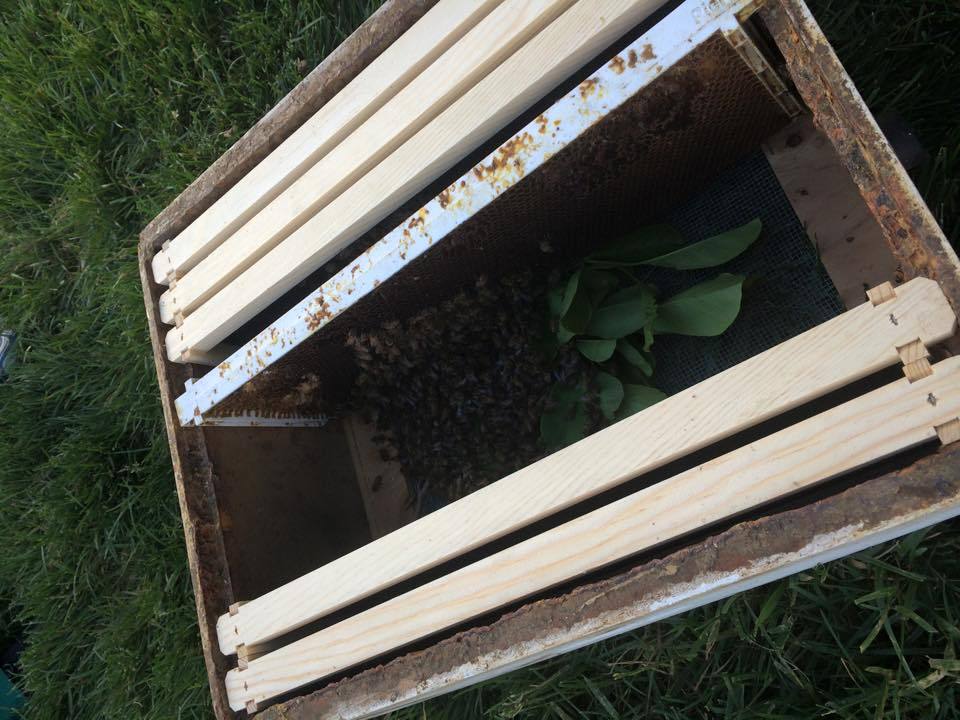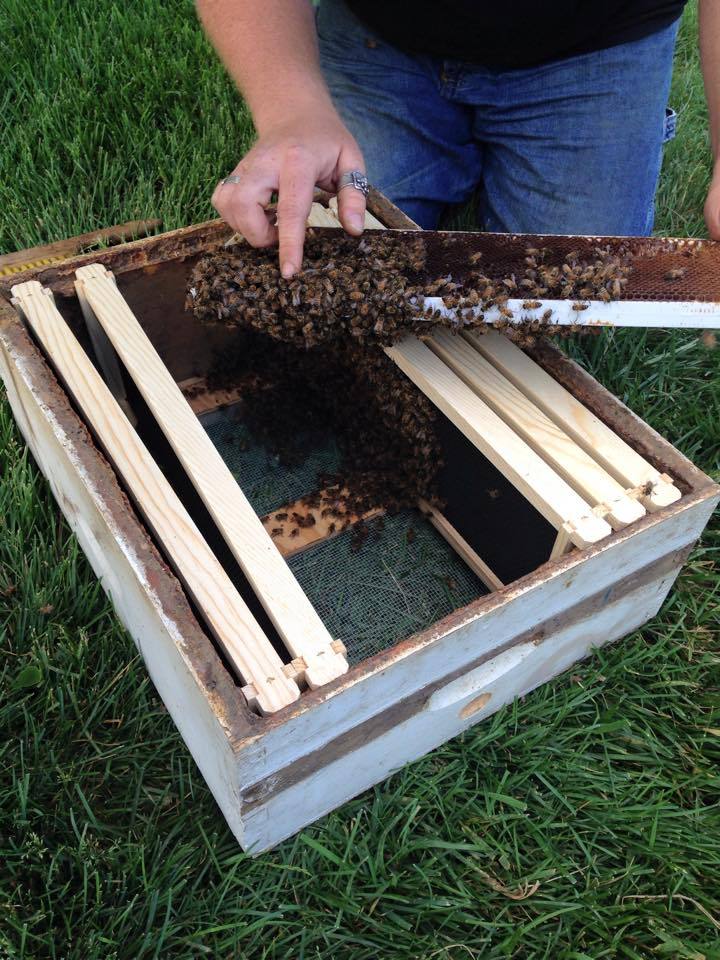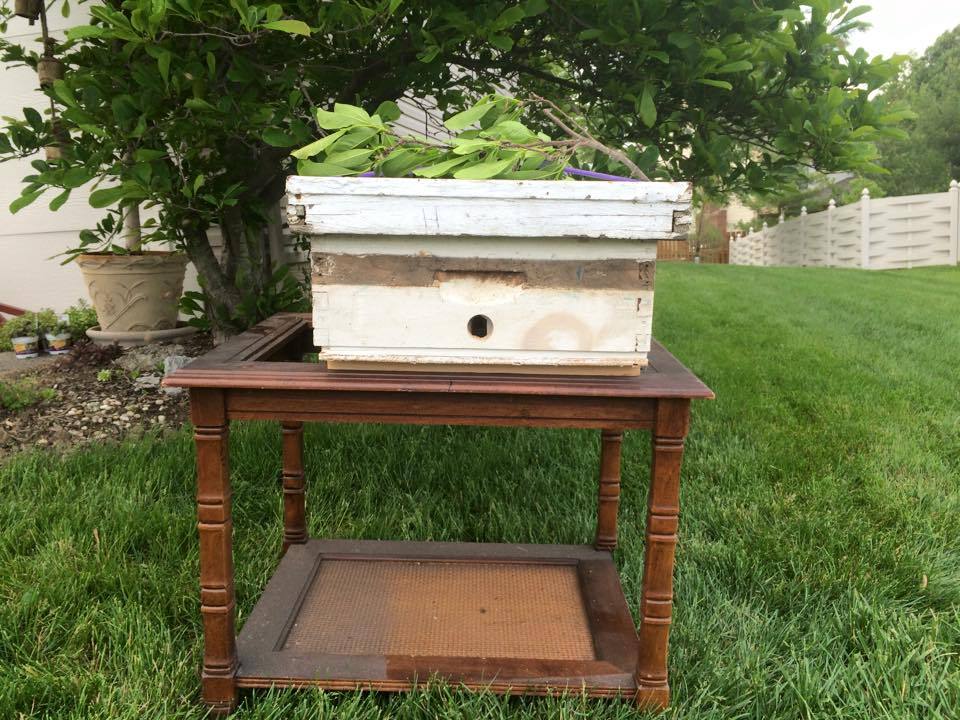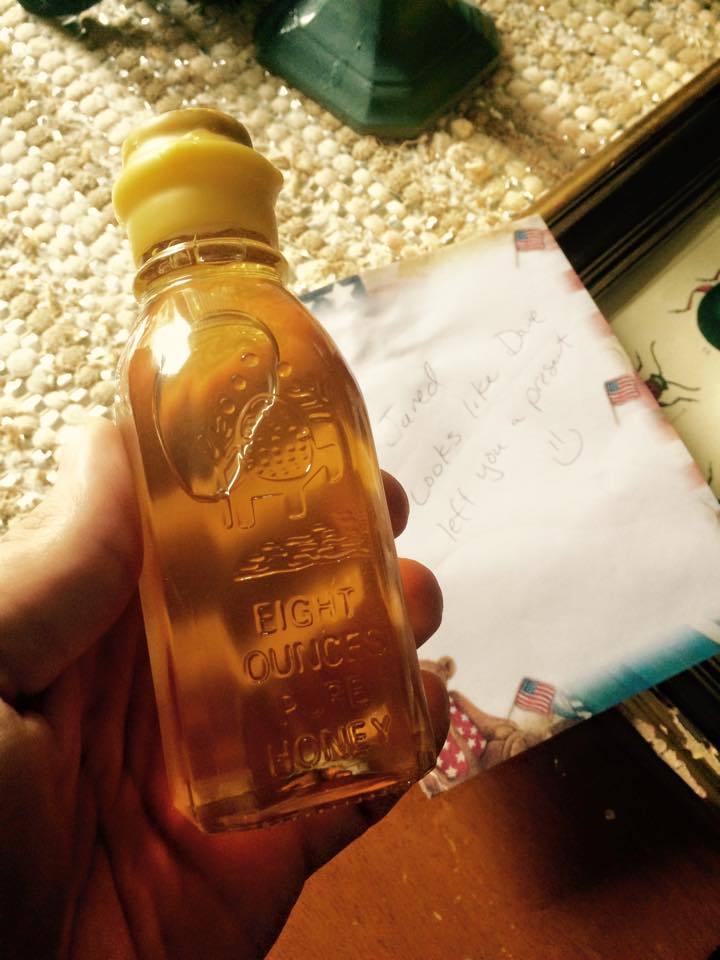While we’re on the subject of honeybees, I was recently visited by a swarm!
I came home Tuesday to find a huge cloud of bees all around a magnolia tree by the garage. In less than an hour, they coalesced into a tight ball of bees about the size of a football.
Now, I knew from a lifetime of nature documentaries that honeybees are at their most docile and least likely to sting when they’re swarming. A this time, they are stuffed silly with honey, don’t have any young to protect, and can simply fly away to avoid predators. They’re cruising around with their queen, looking for a new place to build a hive.
I wasn’t worried about them hurting anybody, but I didn’t necessarily want them to take up residence in my garage or attic. So I did what anybody would have done in this situation. I made a Facebook post about it and then googled what to do.
Fortunately, a friend of mine works at the Stratford Ecological Center in Delaware, Ohio. She put me in touch with their Apiarist (beekeeper), who was simply ecstatic to hear that I had a stray swarm and that I hadn’t poisoned it (apparently, lots of people don’t know the difference between honeybees and wasps/hornets/yellowjackets/etc). We set up a time for him to come rescue the swarm, and he even called a couple of students up to share the experience. One of them had been waiting for over two years to go on a swarm rescue run.
He brought out a hive box with some already-combed frames. We cut down the twig the bees had clustered on and dropped it into the box, and they immediately began claiming it as their home. Detecting the wax comb on the frames and recognizing a good hive location, the bees started to emit a lemony “homing” pheromone, letting all of their sisters know to settle down here and start laying down wax.
We kept the hive box overnight to allow errant scouts time to return. He came back the next morning to pick up the hive and take it to a quarantine site, until he could be sure of the bees health and temperament. He even left us a little parting gift from the apiary at Stratford. Everybody kept saying what an absolute treat it was to find and save a swarm, and how rare it was to see them. Provided the hive is healthy, in a month or two, I could go up to the ecological center and visit my bees!
With 40% of honeybee colonies in the US dying in the last year, every bee that can be saved is a small victory. It was a real privilege to witness this event and have a hand in finding a good home for the swarm.
If you see some swarming honeybees in the wild, call a beekeeper! They’ll be grateful to hear from you, and you’ll be doing some good for our pollinator friends!
